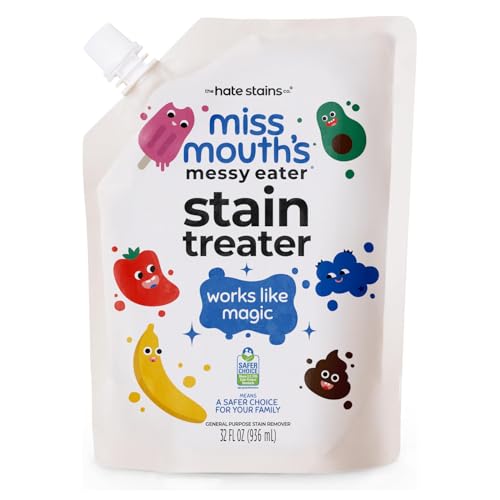For quick assistance, a mixture of vinegar and baking soda could serve as a powerful solution against unwanted imperfections. Combine one part vinegar with two parts baking soda to create a paste. Apply this blend to the stained area, scrub gently using a soft cloth, and let it sit for approximately 30 minutes before rinsing with warm water.
Another effective approach involves using commercial stain removers specifically designed for fabric or synthetic materials. Follow the manufacturer’s instructions closely for optimal results. Always conduct a spot test in a concealed area before widespread application to ensure no damage occurs to the item’s surface.
Regular maintenance of your travel accessories can prevent future occurrences. Wipe down the surfaces after each trip with a damp cloth and mild detergent solution. This practice removes dirt buildup, keeping your bags looking fresh and clean.
For stubborn residues, rubbing alcohol can be utilized. Moisten a soft cloth with alcohol and gently dab the affected areas. Rinse thoroughly and allow the item to air dry completely, ensuring no moisture remains to avoid mold growth.
Identify the Type of Stain on Your Travel Gear
Begin the assessment by examining the discoloration closely. Different types of stains may require specific cleaning methods. Determine if the blemish is greasy, a result of dirt accumulation, or perhaps an ink transfer.
Grease Stains
Grease spots typically appear shiny and slick. If the smudge feels oily to the touch, it usually indicates a substance like food or cosmetic products. Use a mild detergent mixed with water to treat these areas.
Dust and Dirt Accumulation
When the stain appears dull and rough, it is likely a buildup of dust or dirt. These marks can often be lifted with a damp cloth and a mixture of warm water and soap. For stubborn areas, a soft-bristled brush can be effective.
Choose Appropriate Cleaning Agents for Different Materials
Select appropriate cleaning agents based on the fabric of your travel gear. For synthetic materials like polyester or nylon, use a mild detergent mixed with warm water. Apply the solution with a soft cloth or sponge, and rinse thoroughly. Avoid harsh chemicals that may damage the fibers.
Leather Goods
For leather items, utilize a specialized leather cleaner or a mixture of water and white vinegar for light spots. Apply with a soft microfiber cloth, ensuring not to saturate the leather. Follow with a conditioner to maintain suppleness and prevent cracking.
Hard Shell Cases
For hard shell travel cases, a gentle all-purpose cleaner is effective. Ensure the cleaner is safe for plastics. Mix with water, apply, and wipe down with a soft cloth. Always test on a small area first to prevent discoloration. For insights on keeping outdoor gear, check the best mini umbrella brand for protecting your items during bad weather.
For any additional cleaning tasks around the house, exploring tips can be handy, such as how to build your own dog fence for a tidy yard. Choose carefully to protect your belongings effectively.
Step-by-step guide for cleaning fabric travel bags
Begin by vacuuming the exterior with a soft brush attachment to remove loose debris and dust. Focus on seams and crevices where dirt tends to accumulate.
Prepare a cleaning solution
Mix warm water with a mild detergent or fabric cleaner. A ratio of one tablespoon of detergent per two cups of water is typically effective. Test the solution on a hidden area to ensure it doesn’t affect the fabric color.
Cleaning process
Dampen a soft cloth or sponge in the cleaning solution, wringing out excess liquid. Gently scrub the stained areas in circular motions, applying minimal pressure. For tougher spots, utilize a soft-bristled brush to carefully agitate the fibers.
After treating stains, rinse the cloth with clean water and wipe down the area to remove soap residue. Ensure no moisture remains in the fabric by using a dry towel to absorb excess liquid.
Lastly, allow the bag to air dry completely in a shaded area, avoiding direct sunlight to prevent color fading. For a fresh scent, consider lightly spritzing a fabric refresher upon drying.
Step-by-step guide for cleaning hard-shell travel bags
Begin with a soft cloth or sponge and warm soapy water. Gently wipe the exterior surface to remove superficial dust and dirt.
For stubborn grime, create a mixture of equal parts vinegar and water. Dampen a cloth with this solution and scrub the affected areas carefully.
Address deep-set scuffs using a magic eraser or a plastic scraper. Apply minimal pressure to avoid damaging the finish.
Once stains have lifted, rinse the area with clean water using another damp cloth to eliminate any residue from cleaning agents.
Dry thoroughly with a microfiber towel to prevent water spots or streaks. Avoid direct sunlight to prevent warping or fading.
| Cleaning Step | Recommended Action |
|---|---|
| Initial Cleaning | Use soapy water and a soft cloth |
| For Stubborn Stains | Vinegar and water solution |
| Deep Scuffs | Magic eraser or plastic scraper |
| Final Rinse | Clean water with a damp cloth |
| Drying | Microfiber towel, avoid sunlight |
Conclude by applying a specialized polish or protectant suitable for hard surfaces to restore shine and guard against further blemishes.
Preventing Future Stains on Your Travel Bags
Invest in protective covers designed specifically for travel items. These can shield your bags from dirt and scuffs. Always choose covers that fit snugly to provide maximum protection.
Store bags in a clean, dry place. Avoid areas where dirt, moisture, or contaminants may accumulate. Consider using dust bags or cases that add an extra layer of defense against dust and scratches.
Regularly treat materials with appropriate protective sprays or waxes. For fabric, use water-repellent sprays. For hard surfaces, a suitable wax can create a barrier against scratches.
Be cautious during travel. Avoid placing bags on dirty surfaces. Use overhead compartments or dedicated luggage racks to minimize contact with unclean areas.
Clean spills immediately. The faster you can address an accident, the less likely stains or odors will develop. Carry a small stain removal kit for on-the-go touch-ups.
Limit exposure to harsh environmental conditions. Protect luggage from extreme temperatures, direct sunlight, and humidity to prolong its lifespan and maintain appearance.
Implement organized packing methods. Utilizing packing cubes allows for better arrangement within travel bags, minimizing particularly messy items’ interaction with others.
Regularly inspect your bags for wear. Early detection of potential issues can prevent further damage or staining. Attend to repairs proactively to keep baggage in excellent condition.








